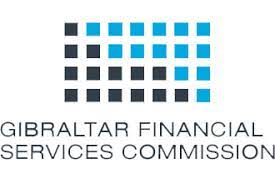Tips for creditors in administration

Many business owners and directors will return after lockdown to discover they’ve become creditors in a statutory insolvency procedure, most likely administration.
This is because administration is an attractive solution for business owners looking to avoid incurring further debts with suppliers following Covid-19.
The procedure is a rescue mechanism for asset-rich but insolvent companies and allows them to be:
- Rescued as a going concern
- Sold as a whole
- Sold in pieces
Revenue generated from these sales is used to pay the company’s debts and liabilities. Normally, there is very little cash left (and oftentimes none at all) for unsecured creditors after the administrator’s fees have been paid.
Within 8 weeks of the company entering administration, the administrator / insolvency practitioner (IP) will circulate a statement of proposal that will include a list of creditors.
Creditors cannot stop a company entering administration and have very little personal power in a statutory insolvency procedure. If you want any control or influence, you must:
- Quickly engage with creditors
- Develop a strategy
- Be proactive in Creditors’ Meetings
- Establish a Creditors’ Committee
- Form a group that speaks with 1 voice
Most administrations last 12 months. If there are funds to distribute to creditors afterwards, the company will be placed into creditors’ voluntary liquidation (CVL).
Separate the roles of administrator and liquidator
The liquidator should review the administrator’s work to establish if they sold any assets significantly undervalue. But in most cases, the administrator will become liquidator when the administration ends.
We strongly object to 1 IP facilitating both procedures. The IP is unlikely to review themselves impartially, which creates a conflict of interest. To counteract this issue, we frequently recommend that creditors:
- Use their combined debt value as a currency to hold the administrator to account
- Appoint their own liquidator to facilitate the CVL
Insolvency & Law can take instructions on your behalf to attend a Creditors’ Meeting and represent your interests. We galvanise creditors and encourage them to become proactive.
A united group of creditors with a defined strategy can say to the company director(s):
“We see no reason to allow the administration to run for 12 months as most things can be done in a creditors voluntary liquidation (CVL). Moreover, we support the following modification to your proposal:
“‘Within 14 days, the company will exit administration and enter a CVL with a creditor-nominated insolvency practitioner acting as liquidator.“‘
Moreover, a confident group of creditors will bargain with the administrator by agreeing to pay most of their fees. But only if they agree to the modification.
Understanding the winding up petition: A crucial tool
In the world of insolvency, a winding up petition holds significant importance. When a company has received a statutory demand (SD) and fails to raise…
Read MoreUrgent Call to Action: Have You Invested in Beech Holdings (Manchester) Ltd?
If you or anyone you know has invested in Beech Holdings (Manchester) Ltd, it’s time to take action immediately and get in touch. The Situation…
Read MoreBankruptcy Annulment: A Fresh Start for Financial Recovery
Bankruptcy is often viewed as a last resort for individuals overwhelmed by debt, offering a path to financial relief but also leaving a significant mark…
Read MoreCastle Trust and Management Services Ltd- The Big Problem for the Gibraltar Financial Services Commission
The collapse of Castle Trust and Management Services Ltd (CTMS) has raised serious questions aboutthe role and effectiveness of the Gibraltar Financial Services Commission (GFSC)…
Read More



